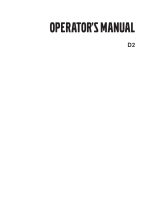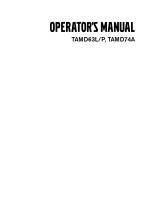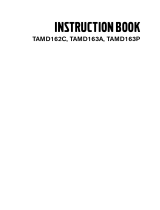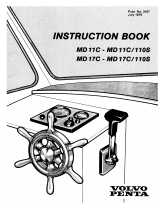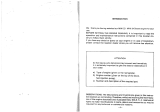
An English version of this Operator’s Manual may
be ordered free of charge up to 12 months after delivery, via
internet, mail or fax. Refer to the order form in the back of
the book.
All information is stored internally at AB Volvo Penta and will
not be passed on to third parties.
Diese deutsche Version dieses Handbuches kann
innerhalb von 12 Montane ab Lieferung kostenlos online,
per Brief oder per Fax bestellt werden. Bitte Bestellformular
hinten im Buch verwenden.
Alle Angaben werden bei AB Volvo Penta gespeichert und
nicht Dritten übermittelt.
Une version française de ce manuel d’instructions
peut être commandée gratuitement, jusqu’à 12 mois après
la date de livraison, via Internet, la poste ou par fax. Voir à
la n de ce document.
Toutes les informations sont stockées en interne chez AB
Volvo Penta et ne sont divulguées à aucun tiers.
Hay disponible una versión en español gratuita de
este manual de instrucciones, la cual puede pedirse, a tra-
vés de Internet, correo postal o fax, en el plazo de 12 meses
después de la entrega del producto. Véase el formulario de
pedido en las últimas páginas del manual.
Todos los datos recibidos son almacenados de forma in-
En svensk version av denna instruktionsbok kan
beställas kostnadsfritt, upp till 12 månader efter leverans,
via internet, post eller fax. Se beställningsformulär i slutet av
boken.
Alla uppgifter lagras internt hos AB Volvo Penta och lämnas
inte ut till tredje part.
Een Nederlandse versie van dit instructieboek kan
kosteloos worden besteld tot 12 maanden na aevering, in-
ternet, post of fax. Zie het bestelformulier achterin het boek.
Alle gegevens worden intern opgeslagen bij AB Volvo Penta
en niet verstrekt aan derden.
En dansk version af denne instruktionsbog kan
bestilles gratis, op til 12 måneder efter levering, via internet,
post eller telefax. Se bestillingsformular i slutningen af bo-
gen.
Alle oplysninger gemmes internt hos AB Volvo Penta og
overgives ikke til tredje part.
Tämän ohjekirjan suomenkielisen version voi tilata
veloituksetta 12 kuukauden sisällä toimituksesta internetistä,
postin kautta tai faksilla. Katso tilauslomake kirjan lopusta.
AB Volvo Penta tallentaa kaikki tiedot sisäisesti eikä niitä
luovuteta kolmannelle osapuolelle.
Pode-se encomendar uma versão gratuita deste
manual de instruções em português, até 12 meses após a
entrega, através de Internet, correio ou fax. Consultar o for-
mulário de encomenda no m do manual.
Todas as informações são armazenadas internamente pela
Volvo Penta e não são partilhadas com terceiros.
Εντός 12 μηνών από την παράδοση μπορείτε να
παραγγείλετε μέσω Internet, ταχυδρομικής επιστολής ή φαξ
μια ελληνική έκδοση του Βιβλίου χρήσης χωρίς χρέωση.
Χρησιμοποιήστε το δελτίο παραγγελίας στο τέλος του
βιβλίου.
Όλες οι πληροφορίες αποθηκεύονται από την AB Volvo Pen-
Вариант настоящего руководства по
эксплуатации на русском языке можно заказать
бесплатно в течение 12 месяцев после доставки по
Интернету, электронной почте или по факсу. См. бланк
заказа на обложке руководства.
Вся информация используется компанией AB Volvo Pen-
ta конфиденциально и не передается третьим сторонам.
Bu Kullanım Kılavuzunun Türkçe versiyonu teslim-
den 12 ay sonrasına kadar internet, posta veya faks yoluya
sipariş edilebilir. Kitabın arka kısmında bulunan sipariş for-
muna bakınız.
Tüm bilgiler AB Volvo Penta’da saklıdır ve üçüncü kişilere
verilmez.
Una versione in lingua italiana di questo manuale di
istruzioni può essere ordinata gratuitamente, no a 12 mesi
dopo la consegna, via internet, per posta o via fax. Vedere il
modulo per l’ordinazione alla ne del manuale.
Tutti i dati forniti saranno memorizzati internamente presso
AB Volvo Penta e non saranno divulgati a terzi.
CALIFORNIA
Proposition 65 Warning
Diesel engine exhaust and some of its constituents are known
to the State of California to cause cancer, birth defects, and
other reproductive harm.




















